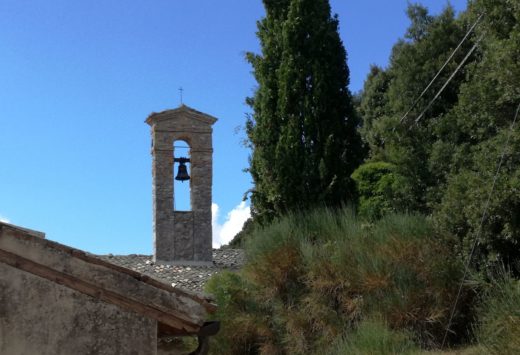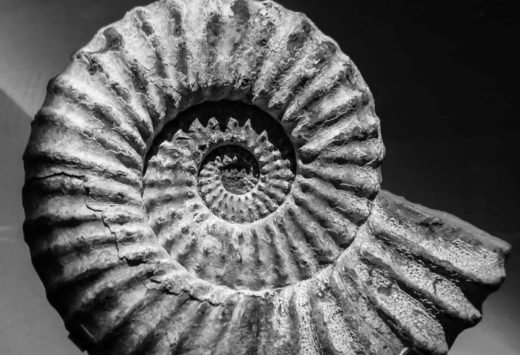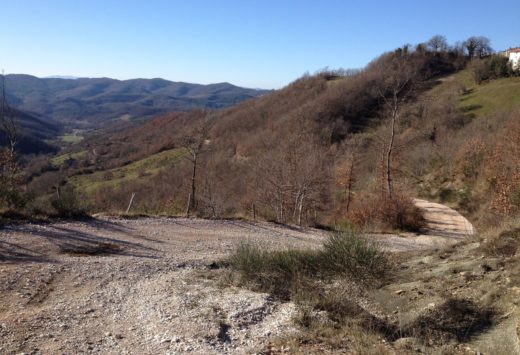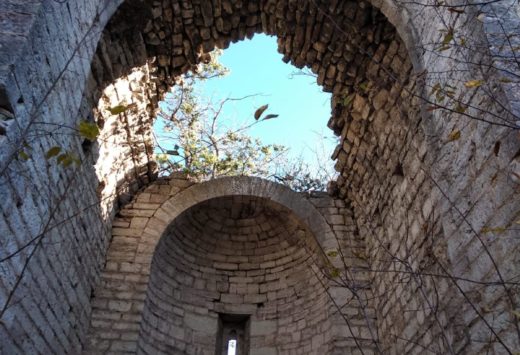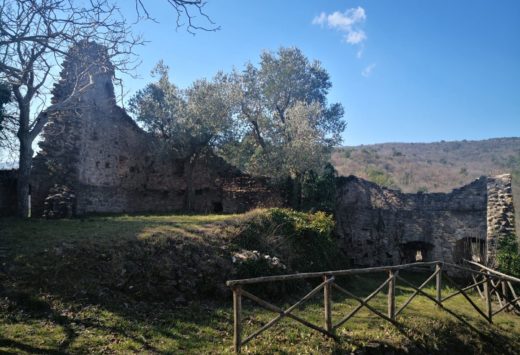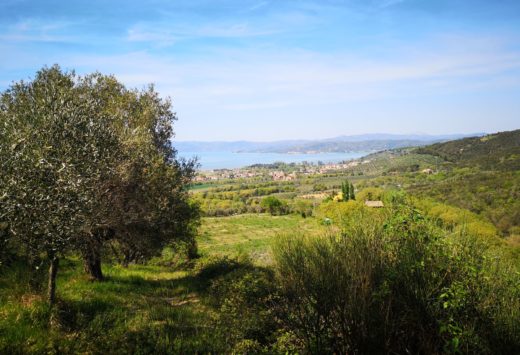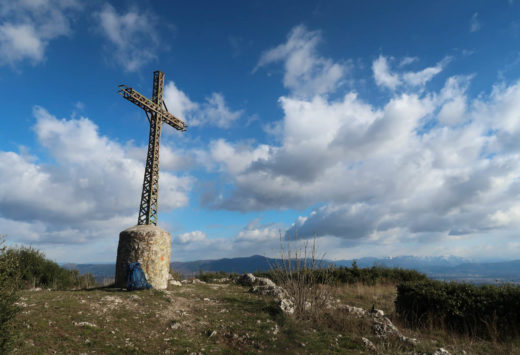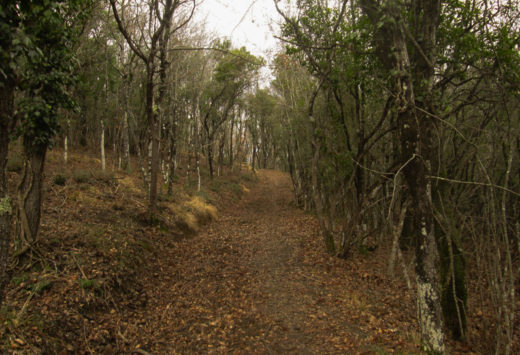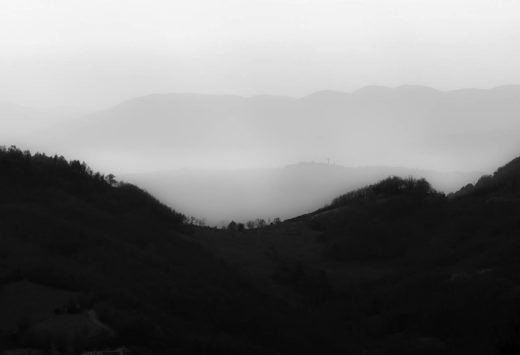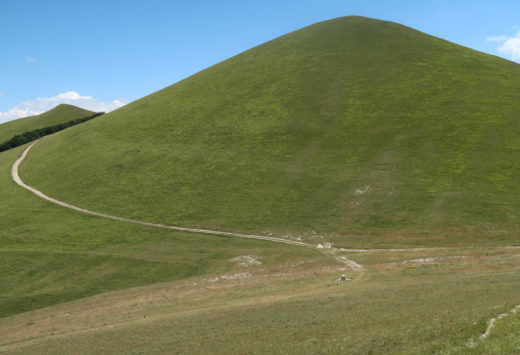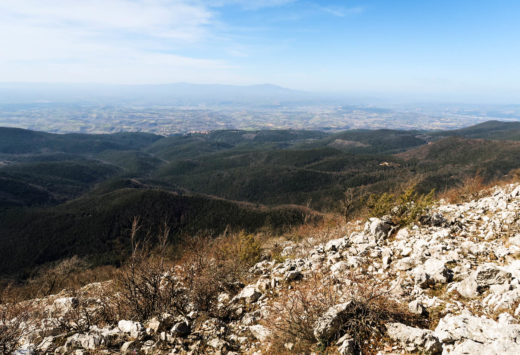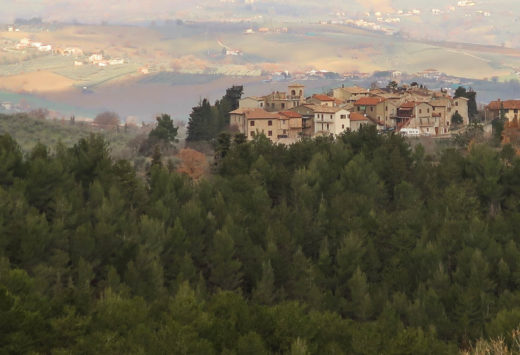Modern day society, with its onus on high-speed travelling and communications – even on holiday – has its own hidden side, since in recent times, a reaction against this phenomenon seems to be developing and an extremely different style of travel is emerging. Far-flung places usually reached by various means of transport appear much nearer as ‘slowness’ is rediscovered as the latest modus operandi for exploring new places. The aim of ‘slow travel’ is to make a clean break with old habits and everyday life and experience leisure time in a completely different way.
Travelling on foot or by bike demands a certain amount of mental and logistical effort: deciding on a route, dividing it in stages, collecting information on stop-offs and destinations and organizing everything down to the smallest detail. But the first thing you need is to rekindle the spirit of adventure and yearning that has always driven humans to travel beyond familiar horizons. Your reward is the sense of peace and satisfaction you get when, spurred on by a pinch of adrenaline, and properly ‘suited and booted’, you finish a leg or your journey or your entire trip .
‘Slow travel’ means having the time to look around, get to know, and really appreciate every aspect of the landscape you’re in, be it a mountain path, fresh-smelling woods, a sunny stretch of countryside, a small village or a large town. It means getting in touch with nature, but also with history, because for centuries this was the only way people travelled. This slow approach gives you more time to reflect and to understand yourself and those around you. And, of course, slow travel is cheap, sustainable, and one of the best ways to visit Umbria and enjoy it to the full.
In the green heart of Italy, along ridges, over slopes, through woods and valleys and along river banks, there are kilometres and kilometres of nature trails, old mule tracks, country roads and ideal spots to visit on foot, by bike, on horseback, or with any other means of unmotorized transport.
Below are some of the routes that have stop-offs in the most important and interesting places. Some are accessible via a circular route, like the mountain rings, where you start and finish in the same place, while others are linear, with various legs that start at one point and arrive at another and, in some cases, continue and develop outside the region, like the great European long-distance paths. For convenience’ sake we have described two types: the paths and the itineraries. The former have a more spiritual and historical bent. They retrace the footsteps of the great religious figures who made travelling and pilgrimages their way of life, stopping off or even starting their journey in Umbria. St Francis obviously comes to mind, plus the first martyrs and St Benedict. The latter have a more nature-loving character, running along picturesque, well-maintained routes and almost always have a theme that gives a sense of meaning to the trip.
La Via di Francesco
The Way of St Francis connects significant ‘locations’ in the life of the Saint who lived in Assisi, is the patron saint of Italy and is one of the most famous and well-loved saints worldwide. Born in the late 12th century, St Francis was the founder of the Franciscan monastic order and was a modern and revolutionary saint. At a point in history when the Church was more interesting in its territorial than its spiritual domains, he preached absolute poverty and help for the poor. With noteworthy foresight, he emphasized man’s relationship with the animal and vegetable kingdom and the importance of the environment and its protection.
St Francis travelled a great deal during his life, alternating periods of solitude and asceticism with intense preaching. Retracing the journey taken by St Francis is very unusual because it places the arrival point, Assisi, right at the centre of the path. In fact, the Via di Francesco is divided into two parts. The Via del Nord starts from the sanctuary of La Verna on the Tuscan border and, after some 200 km and eight stages, arrives in Assisi. La Verna is a small sanctuary located in the mountains in the Foreste Casentinesi National Park, in the province of Arezzo, which stands in a very important spot for followers of St Francis. There was a hermitage here that was often used by St Francis and on these mountains, two years before his death, he received the stigmata, the sign of his earthly holiness. The Via del Sud, instead, follows another route often taken by the saint, which led from Assisi to Rome, the city seat of the Supreme Pontiff. He often travelled to the Holy City to be received by the Pope. On one such occasion he was portrayed by Giotto in one of his frescoes in the Basilica di San Francesco di Assisi, when a delegation of minor Friars led by a general went to Pope Innocent III to obtain approval for their adoption of the Franciscan rule. The Via del Sud is about 300 km long and is divided into some 14 stages. At least ten of these go through Umbria, taking in exquisite villages and rural areas, such as Arrone, Piediluco, Trevi and Spoleto.
Il cammino dei Protomartiri Francescani
In 1219 the friars Adiuto, Accursio, Berardo, Ottone and Pietro, faithful disciples of St Francis, left Assisi to go and preach the Gospel in the lands of the Saracens. After preaching in Southern Spain – encountering some opposition – they passed the Strait of Gibraltar to finish their mission in Morocco, where they were beheaded on 16th January 1220. They were the first martyrs of the Franciscan Order, martyred when Francis was still alive. The Way of the Franciscan Protomartyrs is a circular route that stretches out in the southern part of the region and has stops-off in the places where the friars were born and lived in the early years of their life: Stroncone, Narni, San Gemini, Cesi and Calvi dell’Umbria, as well as the city of Terni, where the Santuario Antoniano dei Protomartiri francescani is located. These are exquisite, picturesque spots not often visited by conventional tourism, still little treasure troves of history and nature.
Il Cammino di San Benedetto
Benedict was born in Norcia in the 5th century and, together with Francis of Assisi, is one of an array of ancient figures who contributed to the development of Christianity in the world. Both founded very important monastic orders and both, as attested by the spirituality that this land ‘naturally’ emanates, were born in areas that now border with Umbria. Benedict was the son of a noble Roman belonging to the Anicia Family. From the very beginning, he rejected the material comforts afforded by his social standing. At the age of twelve he was sent to Rome to study but he soon grew dissatisfied with the empty and dissolute life he witnessed there. He set off on a pilgrimage in search of his true path, finding ‘illumination’ in a meeting with a Roman monk in the valley of Subiaco, not far from Rome, who explained the precepts of the ascetic and monastic life – which was spreading through Italy at that time – carried by hermits of Middle Eastern origin. Benedict was deeply affected by this incredible experience and decided to retire to a solitary life in a cave for three long years. Once his ‘initiation’ was completed, he continued on his journey which led him to Montecassino, in the current province of Frosinone. There, he founded the first Benedictine monastery in history and wrote his famous Rule, often summarized with the phrase ora et labora, which lists two of the main instructions that must be followed by whoever enters these monasteries: pray and work. Today the Order of Saint Benedict, patron saint of Europe, exists worldwide and its rule is the oldest and most structured monastic rule that has ever been instituted.
The Way of St Benedict is about 300 km long and starts in Norcia, winding its way through the exhilarating wilderness of the Monti Sibillini, reaching as far as Subiaco, and finishing at the majestic Monastero di Montecassino. It consists of sixteen stages to be covered on foot – or seven by bicycle – with the first three on the Umbrian side of the border. On this spectacular walk you’ll get the chance to explore the charming cities of Norcia, Cascia – the birthplace of another important figure in Christianity, St Rita – and Monteleone di Spoleto, the highest village in Umbria. From the top of its almost 1000-metre altitude, you’ll get a magnificent view of both the valley below and the majestic peaks of the Sibillini mountains.
The E1 European long-distance path
This path, called the ‘Sentiero europeo E1’ in Italian is over 7000 km long and cuts through the continent vertically, from the North Cape in Norway to Capo Passera in Sicily. In Italy, at level of Tuscany, the route encompasses the Sentiero Italia that runs along the crest of the Umbria-Le Marche Apennines. This is Umbria at its most ancient and unspoilt, touching on places like Scheggia and Pascelupo, Annifo, Colfiorito and Saccovescio, isolated outposts of humanity framed by nature at its most sublime.
Grande Traversata del Tevere
The Great Tiber Crossing (GTT) itinerary starts in the Parco Fluviale del fiume Tevere (Tiber River Park) and follows the entire regional route of the river, connecting the park’s seven fascinating archaeological, urban and naturalistic stopping-off points.
In the footsteps of Guerrin Meschino
Guerrino, a brave adventurer and man of arms, started enquiring into his past after showing his worth in numerous battles as he needed to discover his origins in order to woo and marry the sweet Elisena, princess of Constantinople. To do this he had to travel the world far and wide in search of oracles for news of his family of origin. One of these oracles was actually Sibyl, who inhabited the mountain peaks of central Italy. This is a brief summary of a passage written by Andrea da Barberino, an Italian poet who, in 1410, wrote ‘Il Guerrin Meschino’, a chivalric novel in eight volumes.
The itinerary, which from the Piana di Castelluccio extends as far as the tiny village of Foce, passes through the impressive peaks of Monte di Palazzo Borghese, and is a single-legged trip measuring 13.6 km, designed to imaginatively retrace the steps of the valiant condottiere, willing to stop at nothing to get to the top of Monte Sibilla and track down the oracle that would transform his life.


